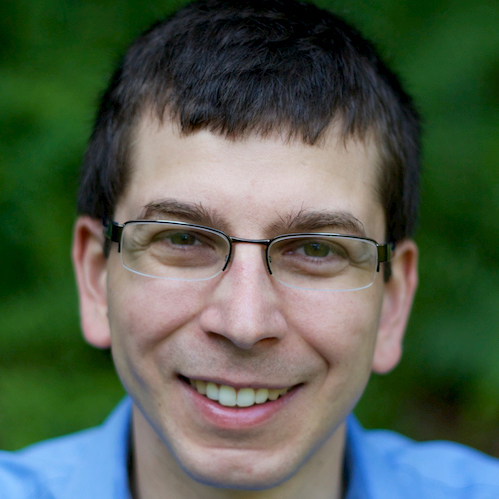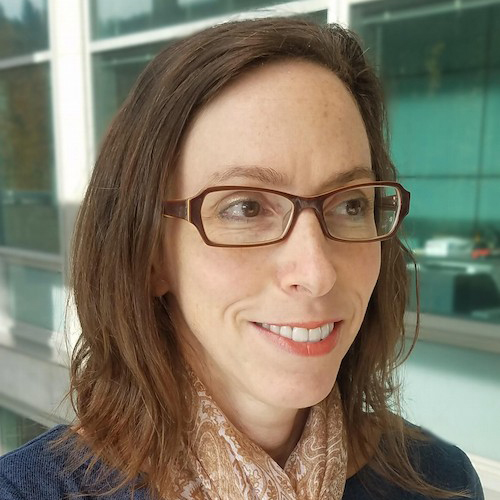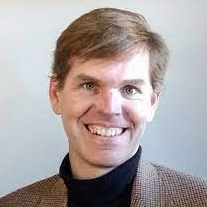Staying competitive in the medical field now requires a new type of mining. While there are no hard hats required, extracting data from a vast array of resources is the new frontier in advancing research and patient care. And the University of Colorado Anschutz Medical Campus is ready for excavation.
“At CU Anschutz, we have gone big in terms of expanding our talented team and investing in the resources needed to push their work forward,” said Chancellor Don Elliman, kicking off a May 10 virtual panel discussion on bioinformatics, data science and artificial intelligence.
“We know that these areas will be fundamental and really foundational to the future of medicine and healthcare – impacting everything from how we understand illness and disease, to how we address prevention and treatment, to how providers make clinical decisions in real time,” Elliman said. “And that’s just the tip of the iceberg.”
Moderated by CU School of Medicine Dean John Reilly, MD, the panel included some of the university’s newly assembled team ready to advance big-data mining:
- Melissa Haendel, PhD, the university’s first Chief Research Informatics Officer (CRIO)
- Ian Brooks, PhD, interim director for Health Data Compass at the Colorado Center for Personalized Medicine (CSPM)
- Sean Davis, MD, PhD, associate director for Informatics and Data Science and deputy director for the Center for Health Artificial Intelligence
- Casey Greene, PhD, professor and director for the Center for Health Artificial Intelligence
A rich environment for data-mining
The major work before them impacts nearly everyone on campus and requires unprecedented collaboration, the experts say. But the unique qualities of the CU Anschutz community provide fertile ground for the task, said Haendel, who said she has been struck by the strong commitment to partnership since joining the campus on April 1.
“And I don’t just mean collaborations or partnerships between the hospitals and the campus, but really deep partnership at a data level,” Haendel said. “We have a lot of silos like all institutions in terms of our data, but there’s a huge willingness and investment to make those work together.”
Those silos include electronic medical records (EMRs) at the two top regional hospitals on campus, to treasure-laden biobanks in CU Anschutz’s many specialized medical centers, to the multiple datasets in the basic research labs that span campus grounds.
Medical field should strike gold
“At the Colorado Center for Personalized Medicine, an absolute star system is our biobank, which has over 180,000 consented patients so far,” Brooks said. As the center continues to sequence those patients’ DNA, an invaluable cache of information grows, with genomics data on about 35,000 patients so far, he said.
“We have a lot of silos like all institutions in terms of our data, but there’s a huge willingness and investment to make those work together.” – Melissa Haendel, PhD
The potential is “enormous,” Brooks said. “What we are working hard to do is expand the clinical pipeline for pharmacogenomics,” he said as an example, referring to the study of the role of genome in drug response. “One goal is to create the ability for EHRs to register alerts for clinicians if there’s something like a drug interaction issue,” he said.
With the biobank’s wealth of control data in addition to actionable clinical data, the epidemiological potential is also huge, he said. “We want to try to think broadly in terms of creating personalized medicine for preventive health. We are trying to develop new pipelines to analyze and mobilize these data on campus with other sources.”
CU Anschutz set to share the wealth
The goal is to broaden that reach to the national level. “We want to take what we know about our patients and compare them to the nation’s patients,” Haendel said, noting that the COVID-19 pandemic has propelled the work because of the great need for worldwide collaboration.
“Especially at the beginning of the pandemic, no single hospital had enough patients to really understand the nature of the disease. But by harmonizing and aggregating data from across the country, we were able to see the trends that we didn’t see locally. This is really important for the future of precision medicine,” Haendel said.
“With AI (artificial intelligence) and machine learning, it’s all about extracting the right information and putting it in front of the right person at the right time, so they can take that and take the next step,” said Greene, whose lab develops algorithms that integrate data from multiple datasets.
Defining bioinformatics as a field focused on making large-scale data usable, accessible and interpretable in order to drive action, Greene said the data could be the missing piece in a researcher’s work on the brink of discovery. It could be a doctor’s answer to treatment for a patient with a rare disease or the information that makes a concept click for a medical student.
Bioinformatics is essentially “making serendipity routine,” he said.
Finding better tools for bigger bounty
In a pioneering partnership with Google clinched in 2017, the CU Anschutz campus began broadening data accessibility and usability.
“We were the first clinical data warehouse system in the country, to the best of my knowledge, to move into the cloud,” Brooks said. “So now we are not just taking advantage of these closed physical structures in a machine somewhere, but we are actually spread across multiple data centers and huge warehouse-sized operations where there are tens of thousands of these servers going on,” he said.
“The amount of processing power and storage power is orders of magnitude beyond what we can accomplish on premise,” he said, adding that the benefits transcend storage capability. “There’s a whole suite of tools that are available to us that allow us to unlock the hidden gems inside the data. That’s the power of the cloud.”
Keeping the treasures in the right chests
Security tops the list of priorities in the data-mining arena, particularly in the medical world. Brooks and team at the CCPM have established a privacy and security framework in close partnership with the hospitals on campus (whose leadership sits on the center's Security and Compliance Committee) and the Institutional Review Board (which oversees all human-subject research).
“There’s a whole suite of tools that are available to us that allow us to unlock the hidden gems inside the data.” – Ian Brooks, PhD
“We set up mechanisms and frameworks so we can, with the right permissions and right oversight, share these data securely, Brooks said. A next goal focuses on broadening that secure reach across the country, he said.
“I think Dr. Haendel’s role as CRIO is going to be vital in setting up the governance and support network so the patients who trust us with their data, whether coming from a biobank or from seeking care at one of our hospitals, know that we are pushing the cutting edge of research as much as we can, but we are doing so in a way that always protects their safety and their privacy,” Brooks said.
Again, the pandemic has propelled work in securely sharing and controlling data access in innovative and effective ways, Haendel said. “We were able to move the right data to the right people, not just to hospitals in our region but across the nation, so that we could leverage the nation’s data collectively and improve care of patients in Colorado.”
Balancing the payout for everyone
As the field of bioinformatics continues its march forward, the experts in the area face many critical issues that need to be addressed, Davis said.
“As data get large enough that we can’t see into them really easily, we need to think about how the data are collected and how that leads to potential biases, how data can be used or misused, and how we can ethically and equitably use those data sets when they are not really stored in somebody’s Excel spreadsheet anymore,” he said. “It is the key or the core of what we are going to be doing at Anschutz.”
While they know their task ahead is big, the data mining crew members also are confident the results will be groundbreaking. “I really think the stage is set here on the Anschutz campus to transform how we teach, how we conduct research, how we treat patients and then ultimately how we improve the health of Coloradans,” Greene said.
View the discussion in its entirety in the video below.




.jpg)


